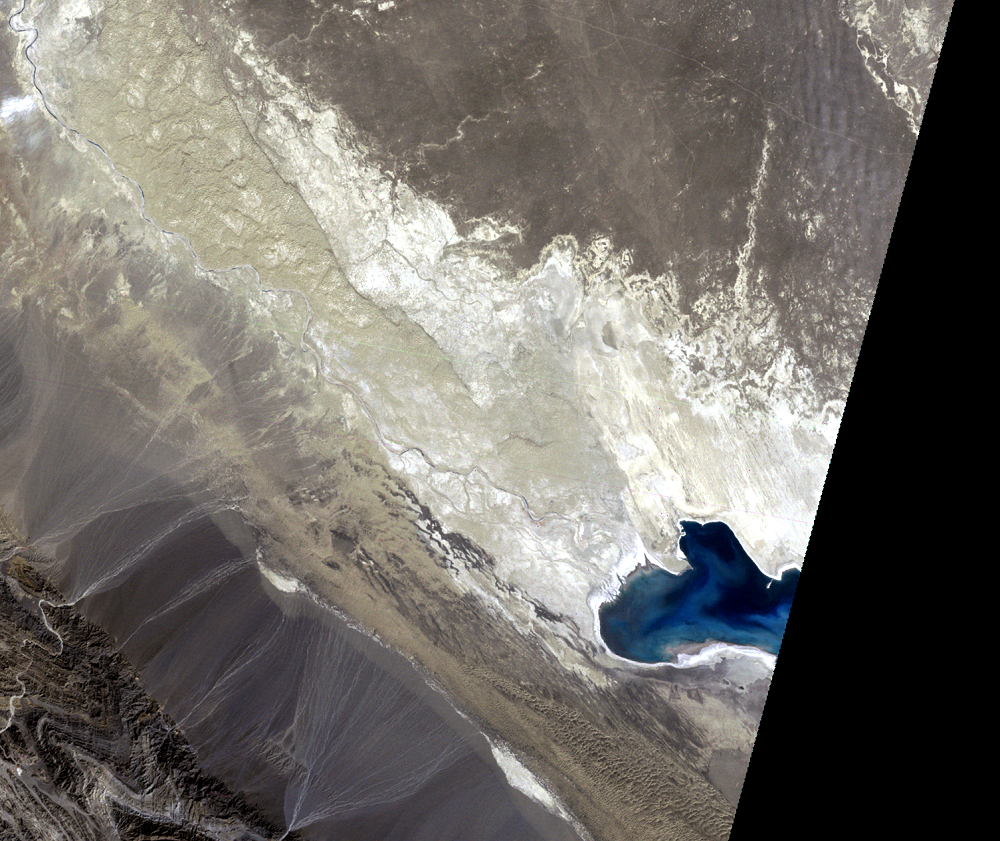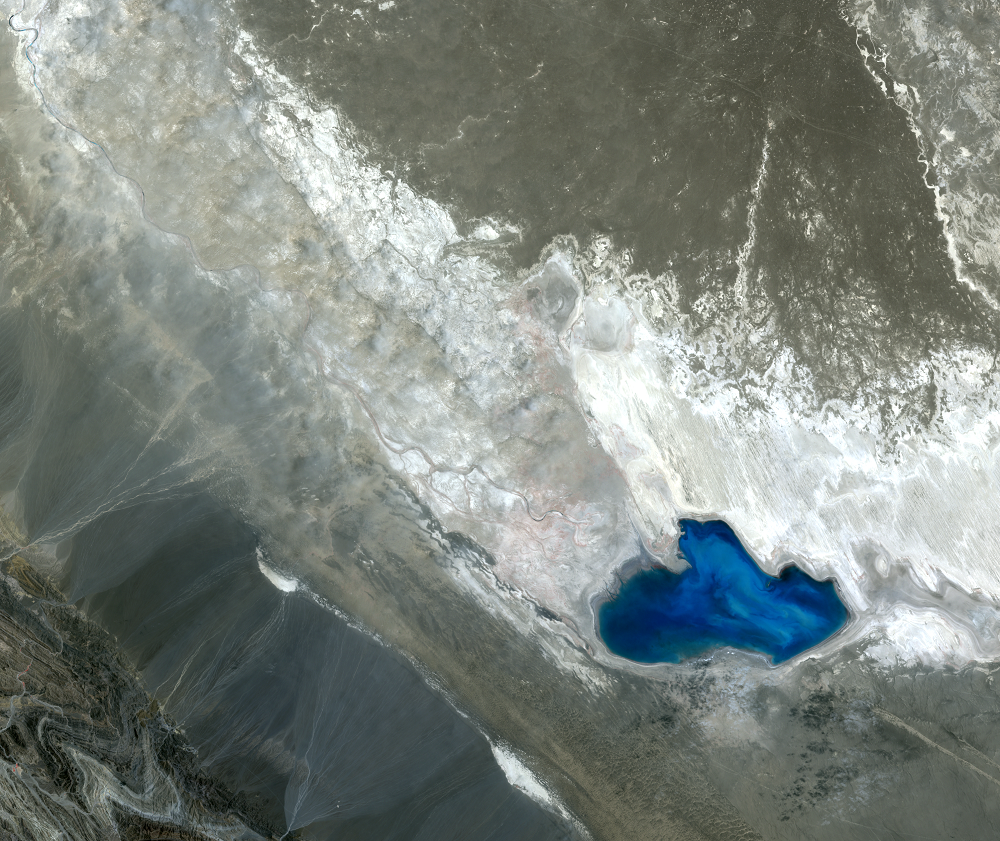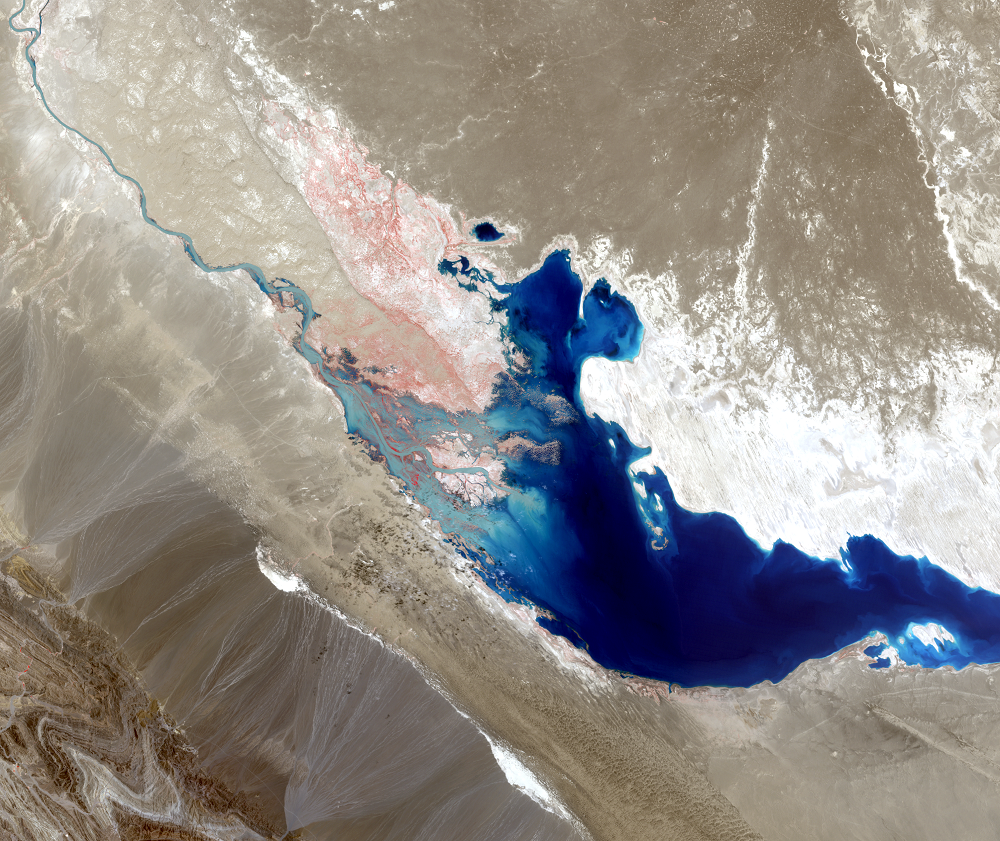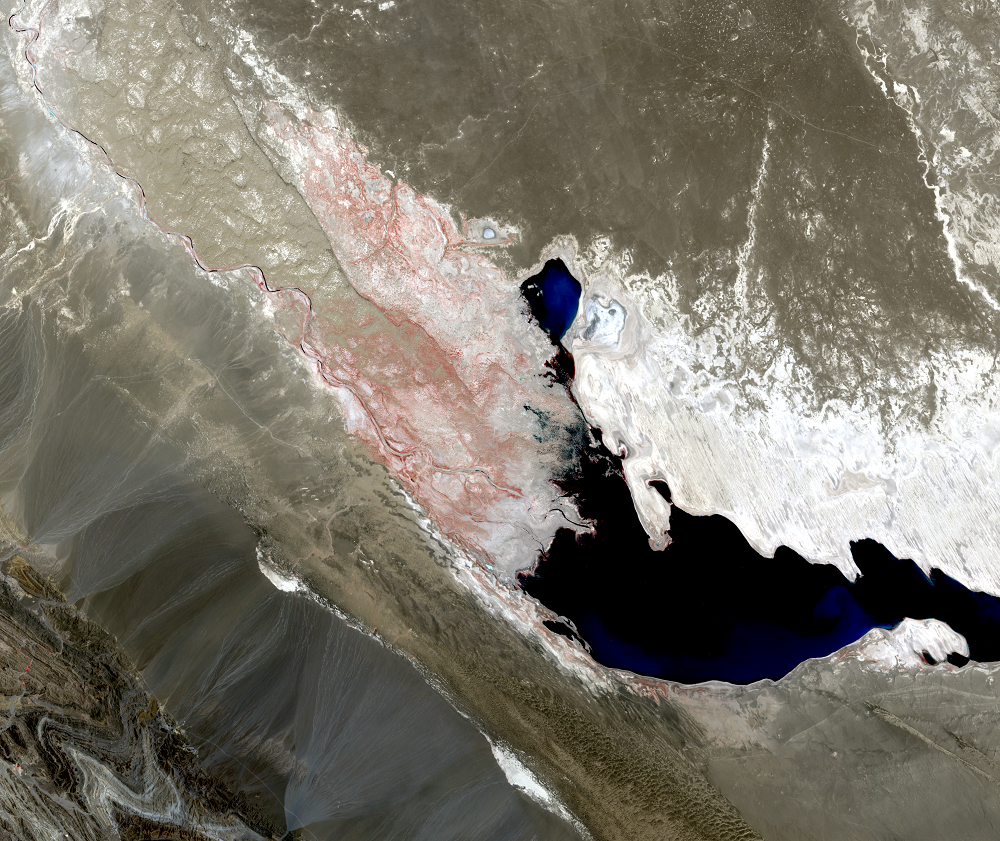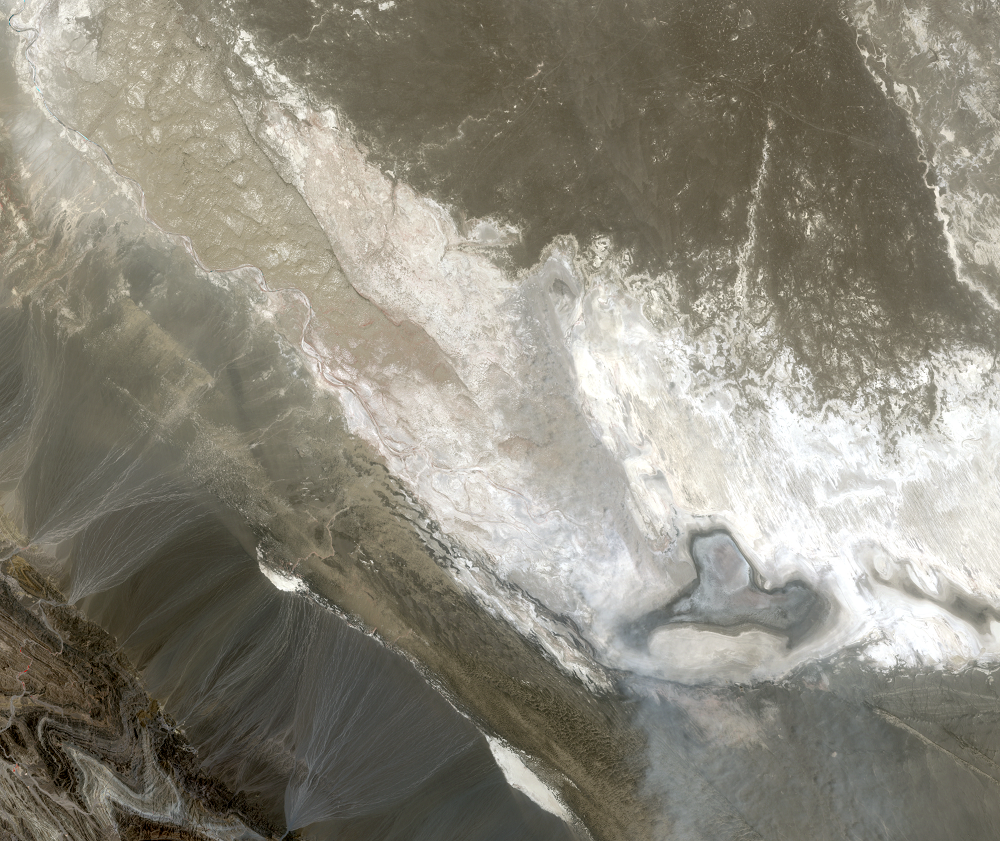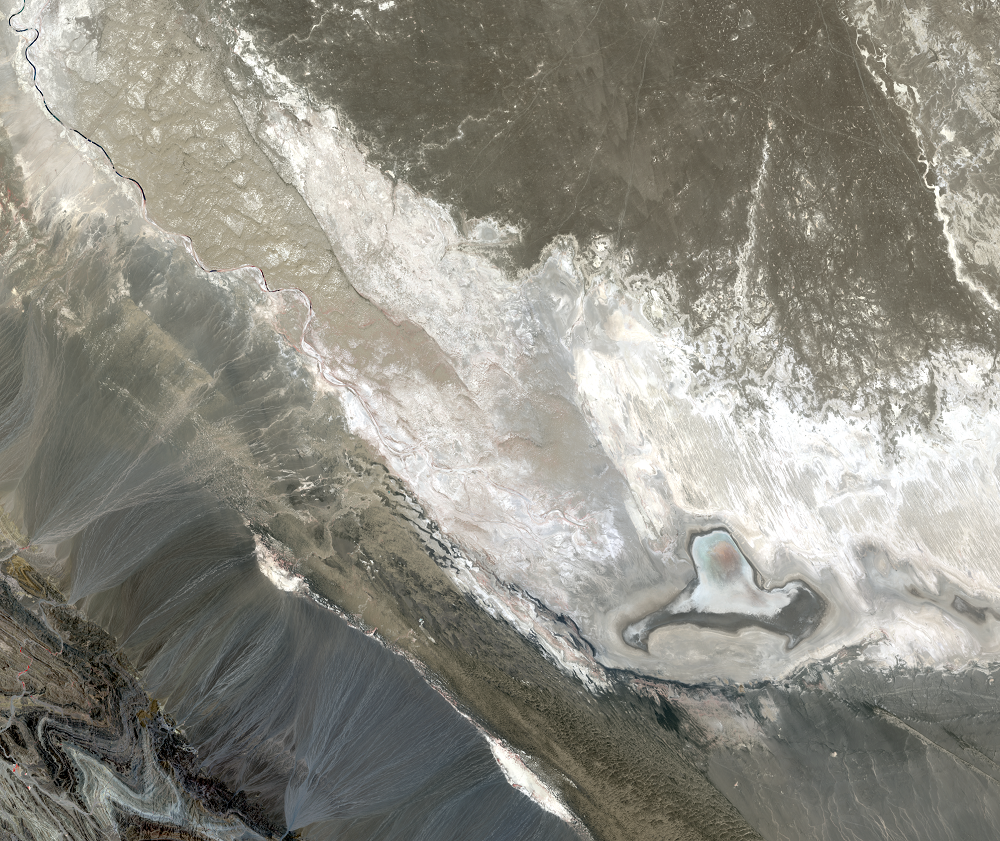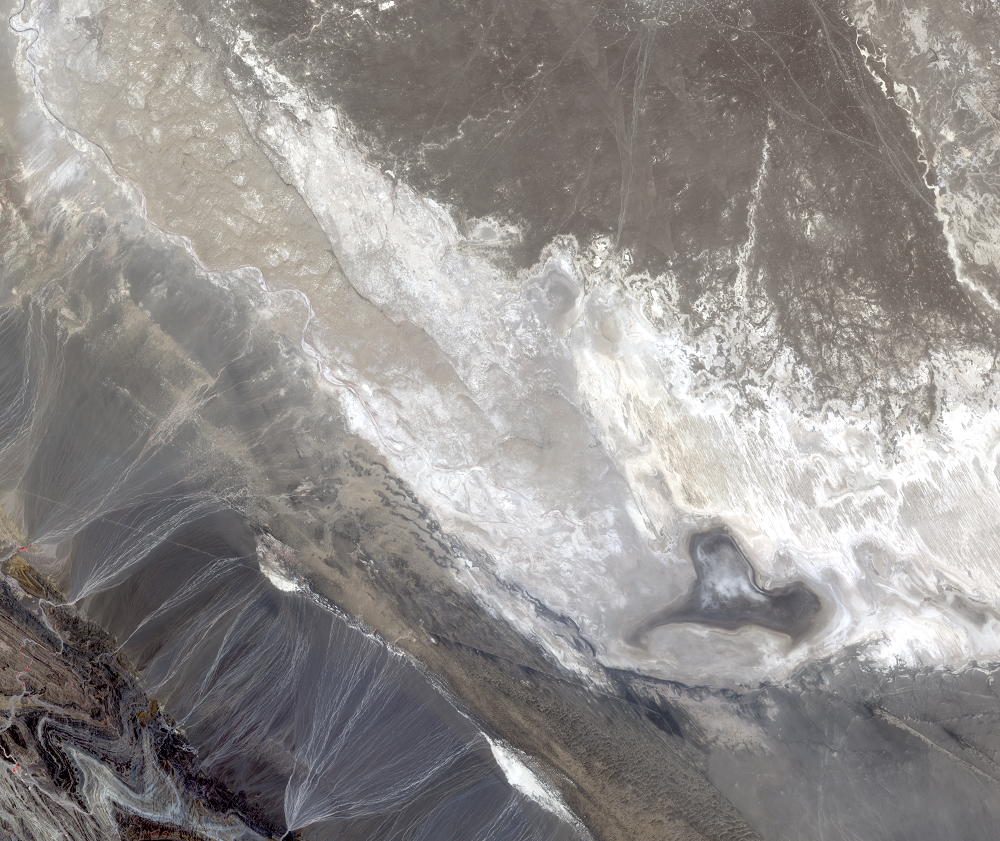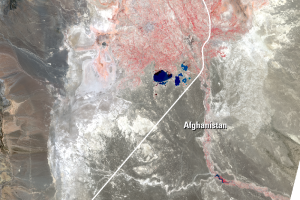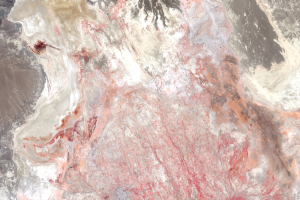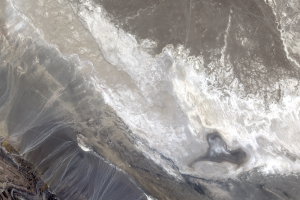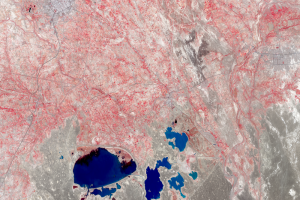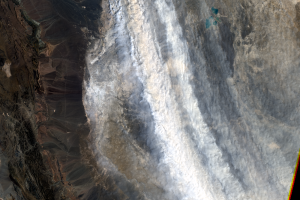
Lake Gowd-e-Zareh
Earth Resources Observation and Science (EROS) Center - Earthshots
Water from the Helmand River is used upstream for agriculture. The river turns west and flows across the border into Iran and drains into the Lake Hamoun wetlands.
Lake Gowd-e-Zareh, at the southern end of the Sistan basin, is the lowest level of the basin and only receives runoff when the river overflows, every 10 years on average. It has no outlet—water is lost only via evaporation, so it is a hypersaline lake. Temporary vegetation grows along the lake’s shore (shown as red in the 1998 and 2000 images) where the water from Lake Hamoun overspill is less salty.

